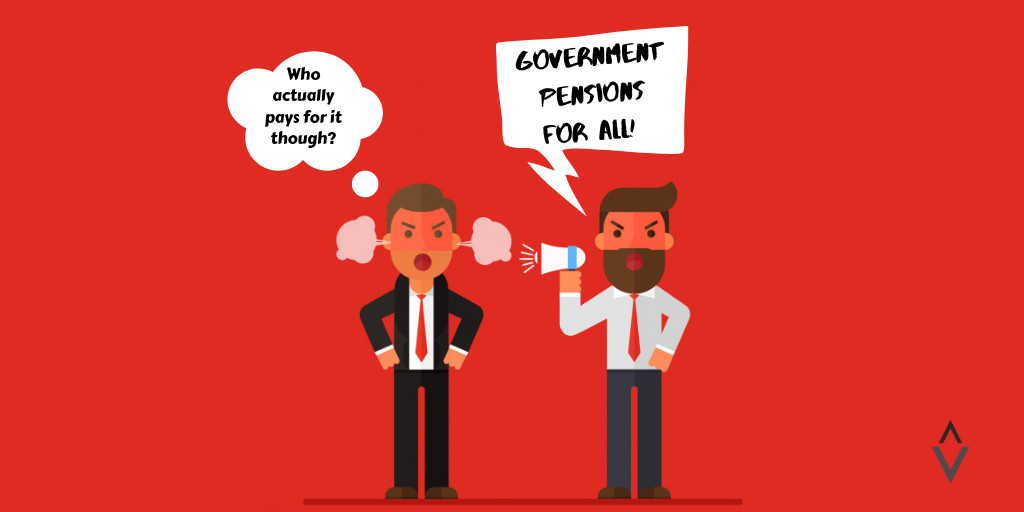Originally published in the Daily FT, Daily News, Sunday Observer, Colombo Telegraph and Economy Next
Sri Lanka could lose out on interest-free aid to develop transportation infrastructure and improve land management, if the Cabinet delays decision on the MCC grant.
Sri Lanka is at risk of losing a US $480 million Millennium Challenge Corporation (MCC) grant due to a campaign of misinformation and political differences among the ruling ‘coalition’. The MCC grant represents the largest grant from a single source Sri Lanka has ever received and presents a valuable opportunity to fix some of the country’s constraints to economic growth.
Despite the fact that this grant is being offered as a response to a proposal submitted by the Sri Lankan Government, rampant political dysfunction has resulted in the Government failing to sign the final agreement. Sri Lanka is now at risk of losing the grant, if it does not receive Cabinet approval and fails to sign the agreement prior to the September 18th MCC Board meeting.
What is the MCC Compact?
The MCC Compact is a grant funded by the Millennium Challenge Corporation, a foreign assistance agency of the U.S. Government. Although heads of the U.S. State Department and U.S. Treasury sits on its board, the MCC operates independently as a separate entity. The aid agency uses a competitive process to select countries on a variety of criteria that include a commitment to good governance, investing in healthcare, education and economic freedom [1] . The pool of eligible countries is also limited to those falling under the threshold for the World Bank’s classification for upper-middle income countries.
Sri Lanka has been awarded a $ 480 million five-year Compact in response to a proposal submitted by the Sri Lankan Government in 2017. Selected countries then go through a constraints analysis study to identify the bottlenecks for economic growth. Sri Lanka’s study was led by the Sri Lankan Government with the assistance of Harvard University’s Centre for International Development and the MCC.
Based on the constraints identified, the Compact seeks to address two critical impediments to growth through its funding: (1) inadequate transport logistics infrastructure and planning; and (2) lack of access to land for agriculture, the services sector, and industrial investors.
The Transport Project seeks to modernise bus systems in the Colombo Metropolitan Region and optimise efficiency of road networks through better traffic management. The project will also work to reduce transport costs and increase mobility between the central region of the country, and ports and markets in the rest of the country. The Land Project seeks to improve access to land, and improve land valuation systems. The project will also focus on digitising the national deeds registry and strengthening legal governance of land in the country.
The nature of opposition
Much of the opposition towards the agreement has centred on fears about ulterior geopolitical motives and threats to Sri Lanka’s national sovereignty. Hype surrounding the MCC has also become intertwined with discourse surrounding the renewal of the Acquisition and Cross Servicing Agreement (ACSA) and the Status of Forces Agreement (SOFA). However, MCC spokespersons have categorically confirmed that the MCC is an independent development agency and the Sri Lanka Compact is not linked the military agreements. These two military agreements have since been placed on hold by the U.S. Government to mitigate concerns about their connection to the Sri Lanka Compact.
Fears have also been raised about covert operations for the U.S. government to acquire land and build military bases on Sri Lankan territory through the projects, hindering the willingness of Cabinet to approve the agreement prior to the upcoming elections. According to publicly available details on the Land Project (which represents only 14% of the total grant budget), the mandate seeks to merely strengthen government administration capacity and assist with technological improvements. The larger part of the Compact (the USD 350 million Transport Project), is focused on optimising public transportation infrastructure. The projects are to be implemented by the Sri Lankan government. The fears raised don’t seem to have any basis in reality.
There is certainly merit to the argument that given the country is so close to an election, a President with a fresh mandate should be allowed to make the final decision on the MCC. Yet given the September deadline, this may not be a luxury that Sri Lanka has.
The authorizing U.S. statute only allows the MCC to fund low income and lower-middle income countries for development projects, and as Sri Lanka has transitioned into an upper-middle-income country, its window of opportunity to capitalise on the MCC could be closing. The MCC has communicated to the Sri Lankan Government that there is a possibility that when the Board meets in September, Sri Lanka may be deemed ineligible for the grant on the basis of the country’s classification as an upper-middle income country.
Given this looming deadline, it is a matter of urgency that the Cabinet makes a final call on the grant before the September 18th Board meeting.
Why do we need it?
Much of Sri Lanka’s development over the last decade has been driven by high levels of government spending. However, with weak tax revenues (11.8% of GDP in 2018), high budget deficits (5.3% of GDP in 2018) and enormous debt (total government debt was 82.8% of GDP in 2018), it has become unsustainable to continue relying on government spending to drive growth. Sri Lanka’s high concentration of borrowing from a handful of financing sources, has also made it inherently vulnerable to external shocks and poor national macroeconomic management. In 2018, approximately half of Sri Lanka’s borrowing was from private capital markets, with nearly a third of total borrowing in 2018 coming from China. This has severely destabilising implications for both Sri Lanka’s economic growth and it’s foreign policy position.
The MCC Compact could go a long way in addressing both of these issues. Implementation of the projects would diversify sources of development finance while creating essential infrastructure to improve land administration and internal mobility options. Uneven development and chaotic land administration have become major obstacles to Sri Lanka’s sustenance of economic growth.
In the final cost-benefit analysis, and based on the publicly available information, the compact seems to present an attractive development opportunity. It is important to note that the MCC compact is a grant, not a loan and therefore is not required to be repaid. In the event that Government fails to sign the agreement in time and seeks to undertake the projects on its own accord, it would need to borrow the funds from another external source.
Earlier this year the government issued international bonds of US$1bn at an annual interest rate of 6.85%. It would be safe to assume that future borrowings are likely to reflect similar conditions. This means that the Government would not just be paying back the loan amount, but also a significant amount of interest on top of it - adding to Sri Lanka’s already debilitating debt status.
Those who wish to argue against the compact need to refer to the relevant documents and provide evidence if their case is to be taken seriously. At this stage, if the Government chooses not to sign the agreement prior to September 18th, it runs the risk of choosing to increase the national debt burden as well as delay essential development. Such a choice should be based on sound reasoning and evidence. It shouldn’t be due to personality conflicts, absurd fear mongering or petty politics.
View this article in Sinhala here.
[1] Congressional Research Service (2018). Millennium Challenge Corporation.
[2] Wettasinghe, C (2019). ‘Sri Lanka at risk of losing US$480mn Millennium Challenge grant’. Economy Next [Online, accessed 30 Aug. 2019]
[3] Ibid
[4] Congressional Notification (2019). Millennium Challenge Corporation. April 25. [Online, accessed 30 Aug. 2019]
[5] Principles into Practice: Country Selectivity (2014). Millennium Challenge Corporation. [Online, accessed 30 Aug. 2019]
[6] Ministry of Finance, Sri Lanka (2019). Annual Report 2018. [Online, accessed 29 Aug. 2019]
[7] Ibid
[8] Ibid
[9] Wignaraja, G (2019). ‘Making the MCC Compact Work for Sri Lanka’. Lakshman Kadirgamar Institute. 16 August. [Online, accessed 30 Aug. 2019]
[10] Aneez, S & Fioretti, J (2019). ‘UPDATE 4-Sri Lanka raises $2.4 bln in dollar bond sale - term sheet’. Reuters. March 7. [Online, accessed 30 Aug. 2019]









